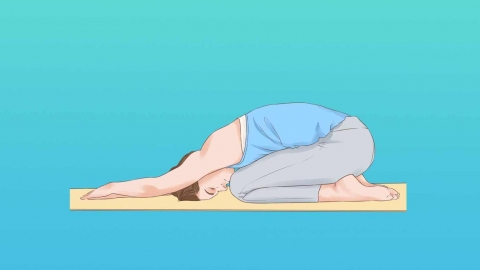What are the benefits and risks of doing aerobic exercises every day?
Generally speaking, doing aerobics every day can have certain benefits as well as potential drawbacks. Benefits mainly include improving cardiorespiratory function, helping control weight, improving posture, relieving stress, and enhancing limb coordination. Drawbacks may include increased joint stress, causing excessive fatigue, affecting sleep quality, causing muscle strains, and ignoring bodily signals. A detailed analysis is as follows:

I. Benefits
1. Enhancing cardiorespiratory function: Aerobics is a form of aerobic exercise. Practicing daily can improve the heart's pumping efficiency and lung ventilation capacity, promote blood circulation, gradually enhance cardiorespiratory function, and help improve physical endurance.
2. Helping control weight: Jumping aerobics consumes a significant amount of calories. Long-term adherence can reduce fat accumulation in the body, help maintain a healthy weight, shape muscle contours, and make the body more toned.
3. Improving posture: Aerobics includes various limb stretching and coordinated movements. Daily practice can strengthen core muscle strength, improve poor posture such as hunchback, and help maintain an upright posture.
4. Relieving stress: The body releases endorphins during exercise, which can regulate emotions. Doing aerobics daily can help relieve stress from work or life and help maintain a positive mindset.
5. Enhancing limb coordination: Aerobics requires coordinated limb movements. Long-term practice can improve body coordination, flexibility, and reaction ability, making limb movements more agile and free.
II. Drawbacks
1. Increasing joint stress: If there are many jumping movements or improper posture, doing aerobics daily may exacerbate wear on the knees, ankles, and other joints. Individuals with higher body weight or inherently weak joints are particularly prone to joint pain.
2. Causing excessive fatigue: The body needs time to recover. Practicing aerobics daily may keep muscles and ligaments in a tense state for prolonged periods without adequate rest, leading to symptoms of excessive fatigue such as general weakness and low spirits.
3. Affecting sleep quality: Performing high-intensity aerobics before bedtime may keep the nervous system overly excited, leading to difficulty falling asleep or reduced sleep quality, which in turn affects recovery and rest.
4. Causing muscle strains: Repeating the same movements daily may cause micro-injuries to muscles and tendons due to overuse. If not adjusted in time, this may lead to muscle strains, causing localized pain and restricted movement.
5. Ignoring bodily signals: Long-term adherence may cause individuals to overlook discomfort signals from their bodies, such as mild pain or fatigue. Continuing exercise forcibly may escalate minor issues into more serious injuries.
To balance the benefits and risks of aerobics, it is recommended to adjust exercise intensity and frequency according to individual physical condition, avoid overexertion, pay attention to proper technique, warm-up, and stretching to reduce adverse effects. Proper dietary and rest arrangements can also enhance the effectiveness of exercise.




